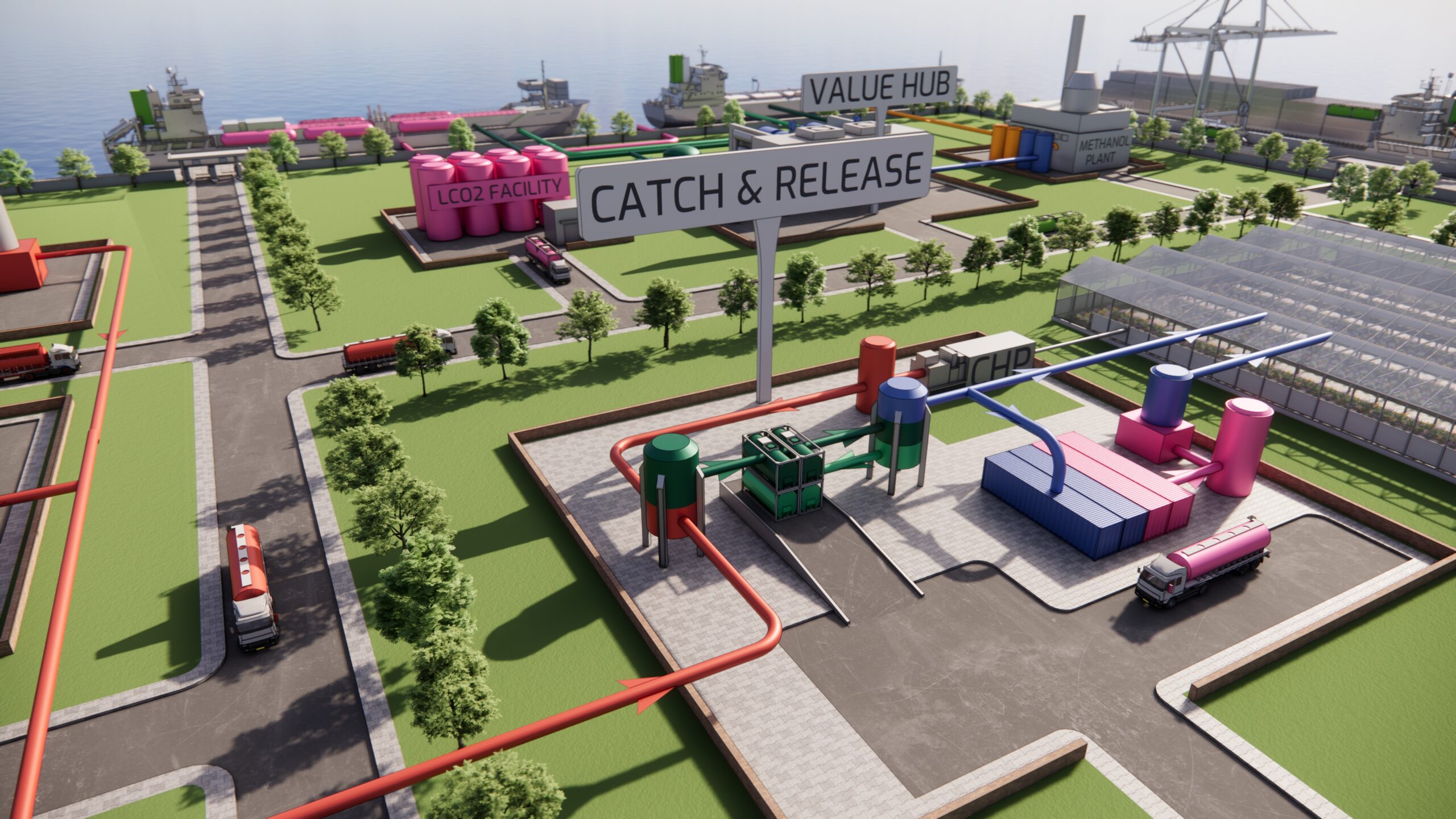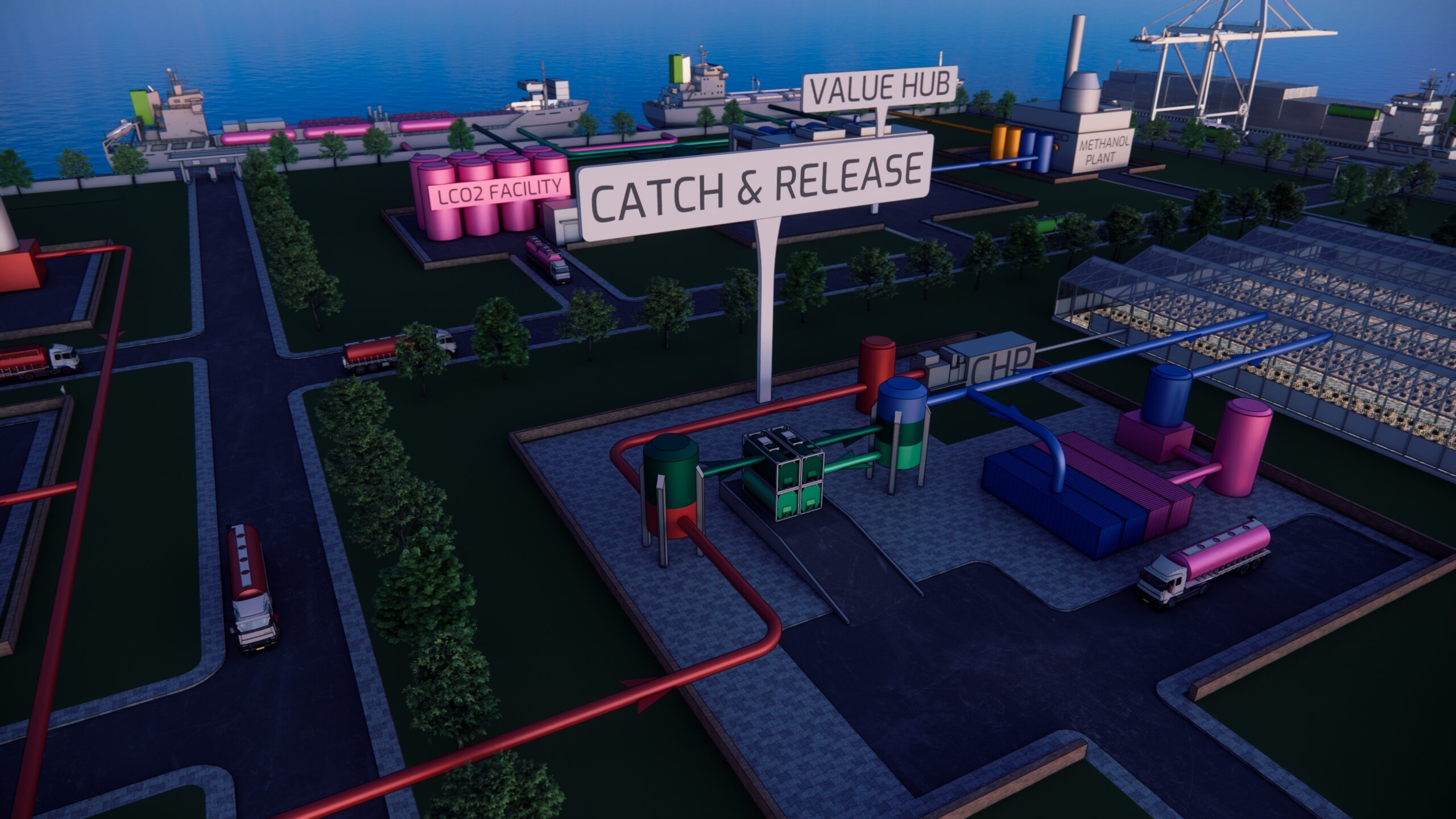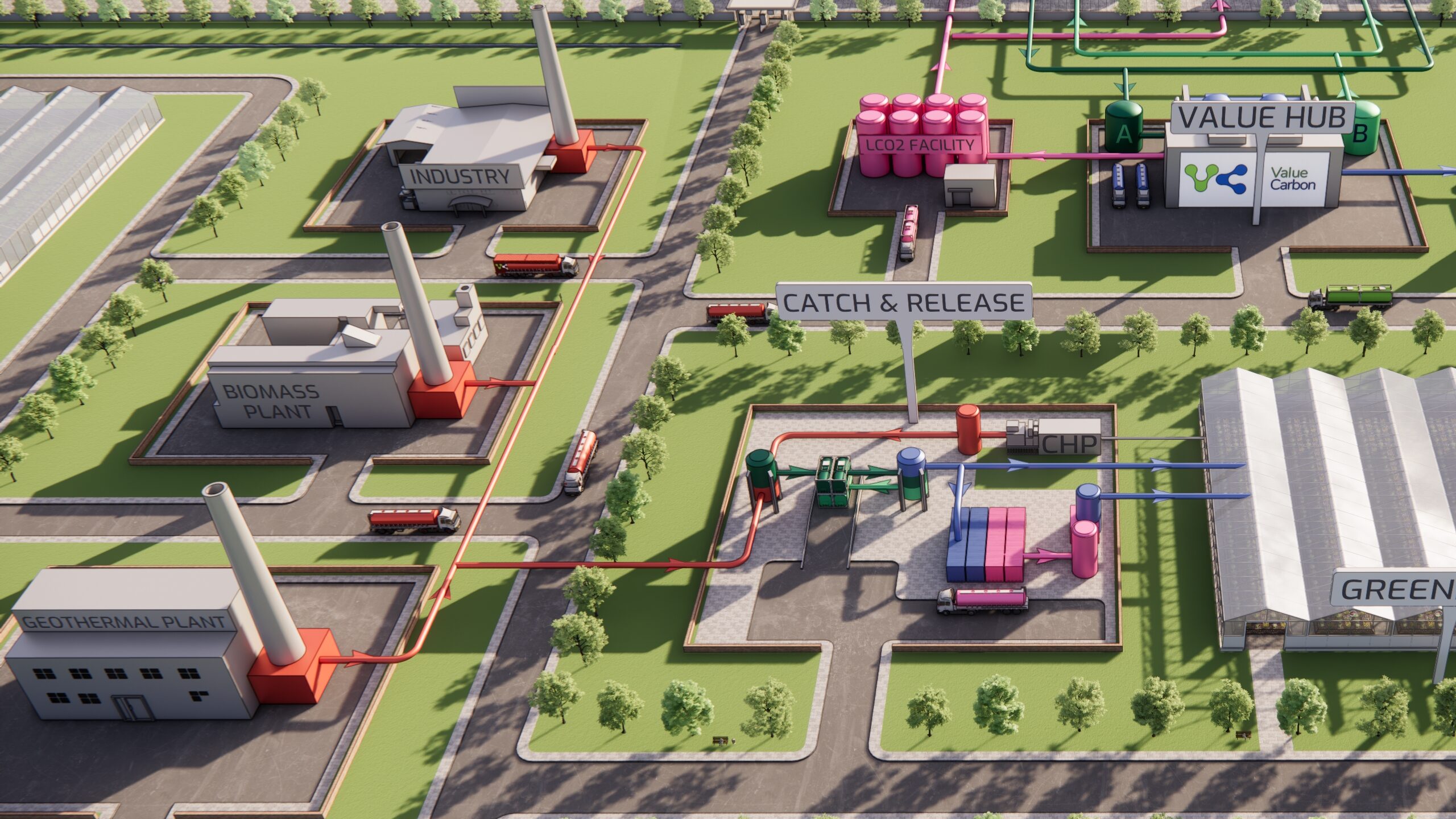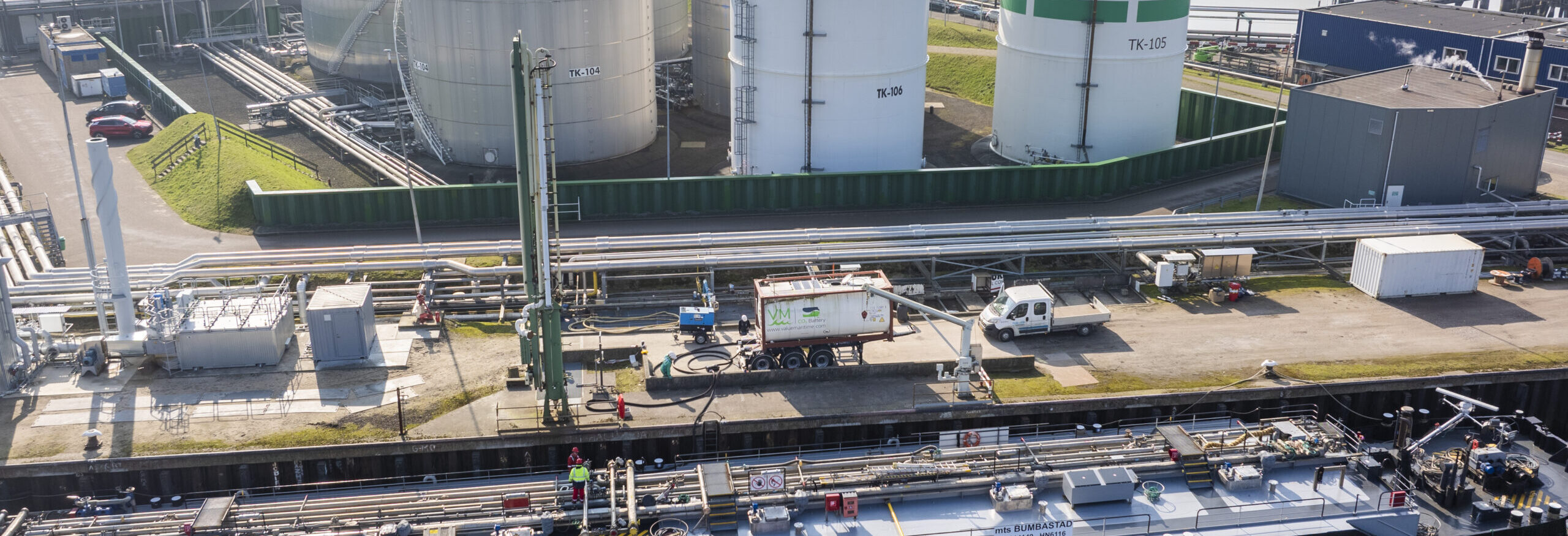Our Services
Logistics
- Offloading
- Handling
- Logistics
- Utilisation & Storage
Catch & Release
- Greenhouses
- Capturing
- Intermediate storage
- Stripping/release of CO₂
Logistics
- Catching
- Handling
- Distribution
- Utilisation & Storage
- Greenhouses
- E-fuels
- Storage
Value Hub
- Handling CO₂
- Aggregating CO₂
- Distribution
- Utilisation & Storage
Carbon Utilisation & Storage
Catch & Release for Greenhouses
Greenhouses play a vital role in the Netherlands, not only providing fruits, vegetables, and flowers locally, but also exporting around 80% of their production. To grow healthy crops efficiently, greenhouses rely on CO₂ for photosynthesis. Increasing CO₂ levels in a greenhouse can boost crop growth by 20–30%.
Most greenhouses operate a CHP (Combined Heat and Power) system to generate both electricity (for internal use and the Dutch grid) and heat, which is essential for crop growth. However, most heat, and therefore CO₂, is produced at night and early in the morning when there’s no sunlight. Because photosynthesis only happens in daylight, this CO₂ is released into the atmosphere unused.


Catch & Release – How it works
Our innovative system captures the CO₂ emitted by the CHP during the night and stores it in tanks. When the sun rises, the stored CO₂ is released into the greenhouse, where it’s fully utilised by the plants for photosynthesis, enabling optimal growth and eliminating waste.
With Catch & Release, greenhouse owners no longer need to run their CHPs during the day just to generate CO₂. That means less natural gas consumption and no additional CO₂ emissions, a win for both productivity and the planet.
Our absorber catches the CO₂ from the CHP in our solvent. The rich solvent is then stored in a container. During daylight, the rich solvent containing CO₂ goes from the container to the stripping unit/desorber.
The gaseous CO₂ goes into the top of the greenhouse via pipelines and the clean solvent goes back into the container and is ready for re-use.
Industrial Companies
Value Carbon’s technology is also suitable for small-scale land-based emitters, such as generators and CHP plants emitting less than 100,000 tonnes of CO₂ annually. These emitters can capture and purify CO₂ on-site before transporting it to various end-use applications, including storage, greenhouses, and fuel production.


E-fuels
Value Carbon identifies e-methanol as a crucial fuel for the future. The production of synthetic methanol requires CO₂ as a feedstock, making captured carbon an excellent input. Ships equipped with carbon capture and running on methanol can complete a circular process by capturing and reusing CO₂.
Storage
Storage solutions such as Porthos, Aramis, and Northern Lights provide opportunities for long-term CO₂ sequestration. Depending on the location, CO₂ may be stored in gaseous form or liquefied for injection. The Value Hub will play a crucial role in preparing CO₂ for underground storage.
Underground storage is recognized under EU ETS regulations as a valid emissions reduction strategy. Future developments may also allow for permanent chemical binding of CO₂, pending regulatory approvals.


Value Hub
Value Carbon is developing the Value Hub in the Port of Rotterdam to handle CO₂ for various applications. The hub will enable purification, compression, and liquefaction of CO₂. It will also provide storage facilities for both lean and rich solvents, facilitating transport to underground storage, synthetic fuel producers, and greenhouses via pipelines or trucks.
The facility is being designed to provide a direct and reliable way for shipowners, as well as other land-based CO₂ emitters, to offload captured carbon and connect to a growing carbon value chain.
Once completed, the Value Hub will serve as a key facility for CO₂ purification, liquefaction, and distribution, supporting a wide range of applications from underground storage to greenhouse enrichment and e-fuel production, such as e-methanol.
The Value Hub is also planned as a blueprint for future offloading locations along key shipping routes, giving early adopters a strategic advantage as the market matures.
Turning CO₂ into Growth: The Catch & Release Journey
Curious about how Catch & Release works? This video showcases the system that helps greenhouses and industries optimize CO₂ use, reduce emissions, and improve sustainability.

